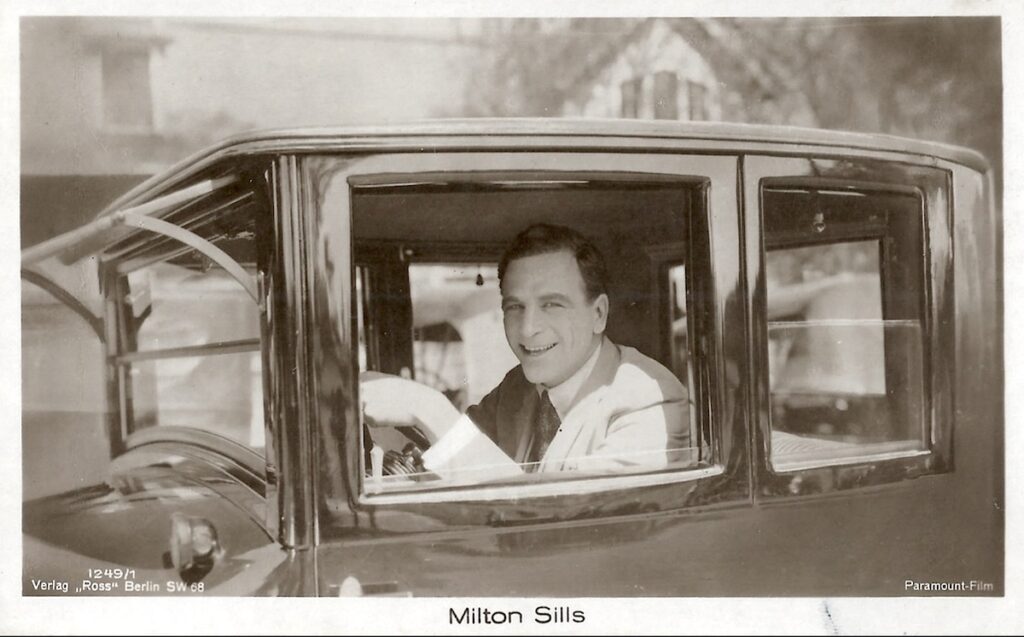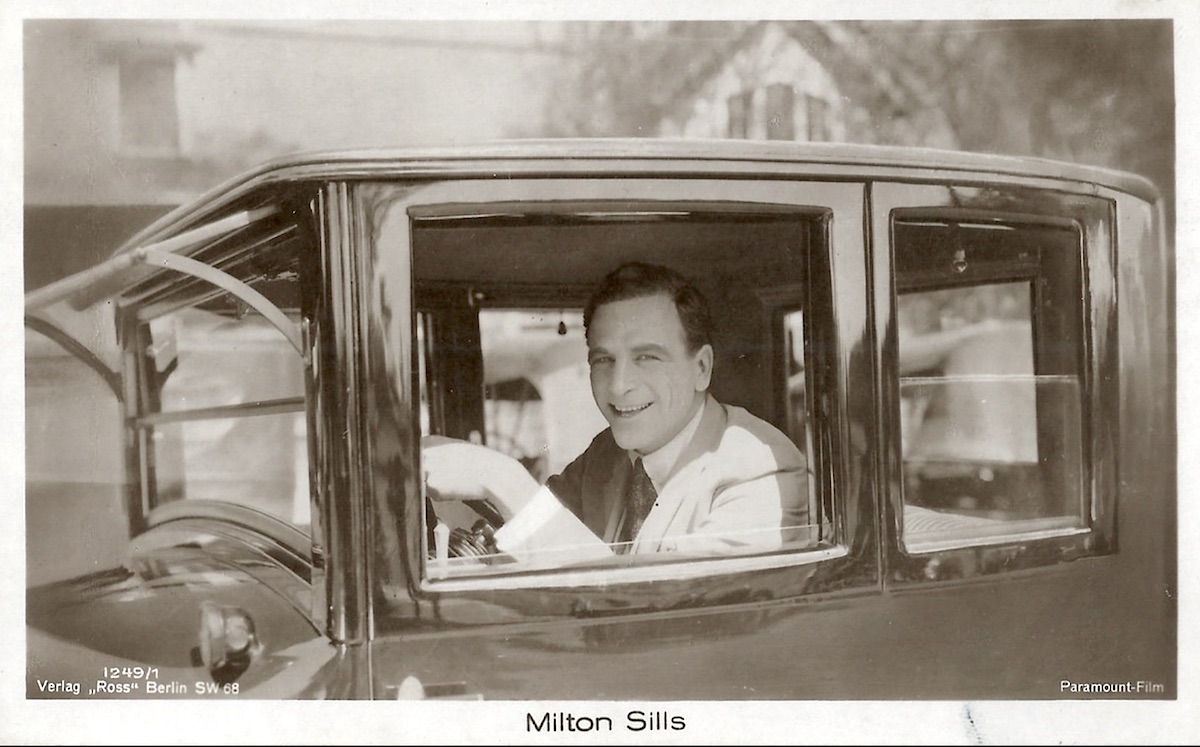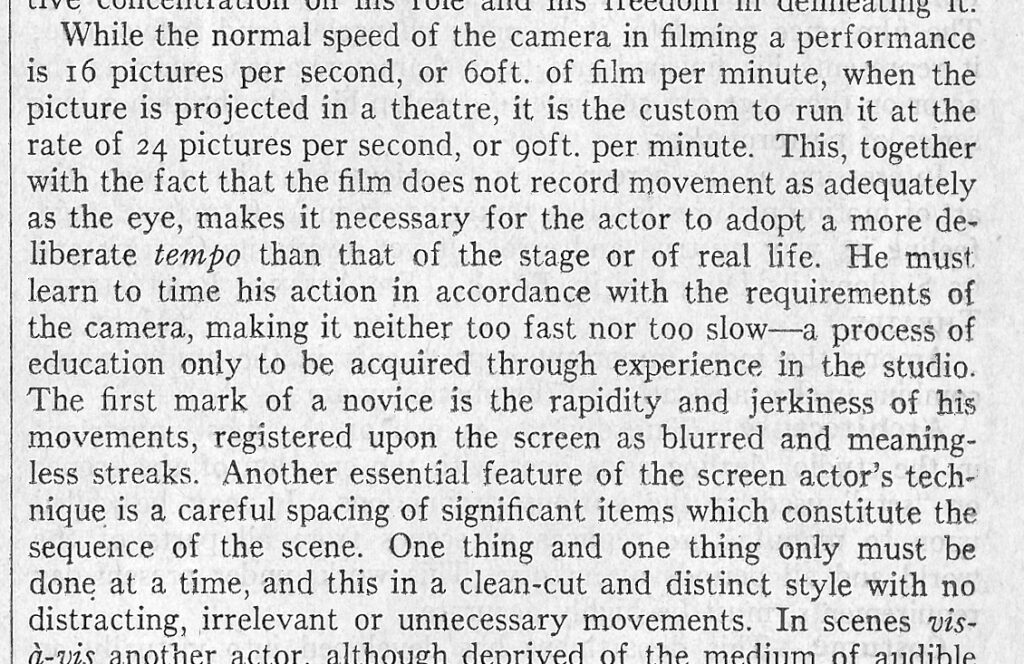The “deliberate tempo” Milton Sills writes of was one of two things I picked up on when I began watching silent comedy film sequences at cranking speed. The other performance facet was one that reminded me of something I learned from taking a semester of mime on college.
The slightly slower movement style is the one giveaway that most people pick up on when a silent movie is projected at a slower rate than it ought to be and was expected to be by the people who made it. But there’s something else that makes the overall performances seem slightly slower. It’s something that almost gives a slightly mechanical look to the movement.

In mime, one of the things we learned to do was defining the invisible object we were taking ahold of. Not just defining it, physically suggesting the shape of the object with out movements, but — more importantly — separating that object-definition from what we next did with the object. There is a fraction of a section’s pause you need to insert between grabbing the invisible mug’s invisible handle and picking the invisible mug up. And again, after raising it to your mouth, before taking a mimed sip. And then another before removing it from your mouth, and when the mug is placed back on the table, and before removing your fingers from the mug handle. And so on.
Because without these little physical commas, you wind up with something of a blur of movement that the audience has a harder time of decoding. These pauses are what I noticed in watching silent films at cranking speed.
Not that objects needed being defined physically for the audience, since they weren’t being pantomimed, but so the movement would not zip by and be harder to decode or understand by the viewing audience. I don’t think this was a deliberate applicate of mime skills by actors in Silent Film, but rather was a borrowed technique from performing in huge theaters or circuses that everyone was already used to.
Sills’ reference to this in his article on motion picture acting, although not in as elaborate detail as I’ve outlined above, is key, as far as the adjustment of physical techniques for the speed-up of silent film:
Another essential feature of the screen actor’s technique is a careful spacing of significant items which constitute the sequence of the scene. One thing and one thing only must be done at a time, and this in a clean-cut and distinct style with no distracting, irrelevant or unnecessary movements.
Encyclopedia Brittanica (edition publ. 1929), Milton Sills on “Motion Picture Acting”, p. 861.
If you watch a silent film at 66% or 75% of projection speed, you’ll see these pauses. They’re kind of like the pop-and-lock you’ve seen in breakdancing and hip-hop, where individual segments of a dance move have been broken up into several bits.
There is no name for this technique as far as I’ve been able to determine from the many conversations I’ve had and silent-filmmaking experiments I’ve done over the last several years with clowns and physical comedy performers. But they all get what I’m talking about and when we’ve inserted these physical commas into actions, filmed them (digitally, of course) and then watched the footage sped up 35-50%, what we wind up with looks like Silent Film, and not just film that’s running faster.
I’ll discuss how this happens and why it works next…
- To watch silent movies on DVD at a reduced speed, use VLC Media Player. YouTube also has a feature (click the gear icon) to adjust the speed.
- To try the acting-for-sped-up-film technique, I highly recommend FilmicPro for iOS and Android.
The first post in this series is here.
The previous post (#50) to this one is here.
The next post (#52) is here.


Hello
I will have to try and see what you are talking about. Maybe try the 1915 Sherlock Holmes with William Gillette.
thanks again
The 1915 Sherlock Holmes might not be a great place to start. Gillette’s performance is right off the stage and makes no accommodations for speed. The restoration runs at 16 fps to accommodate that, so that his performance lands better. The other players in the scenes are in fact making the adjustments. and the running speed if anything may give you an opportuty to see what the compensation looks like without having to slow the video down, since the film is playing pretty much at cranking speed.
“Comma.” “Pause.” My mime coach called it a “pick.” I called it a “stop” because coach said silently say “pick” each time we pause to define the object. I later realized the sprocket holes on film do the same thing – stop each frame so our eye/brain can pick out each movement for a split second. Otherwise there would just be a blur. (This is one of your best blogs!!)
In animation, these pauses have always been referred too as “holds”. They are essential to readability in animation, too.
Yes…I was trying to think of the term for this. I knew of “key” poses, and “aiming”.